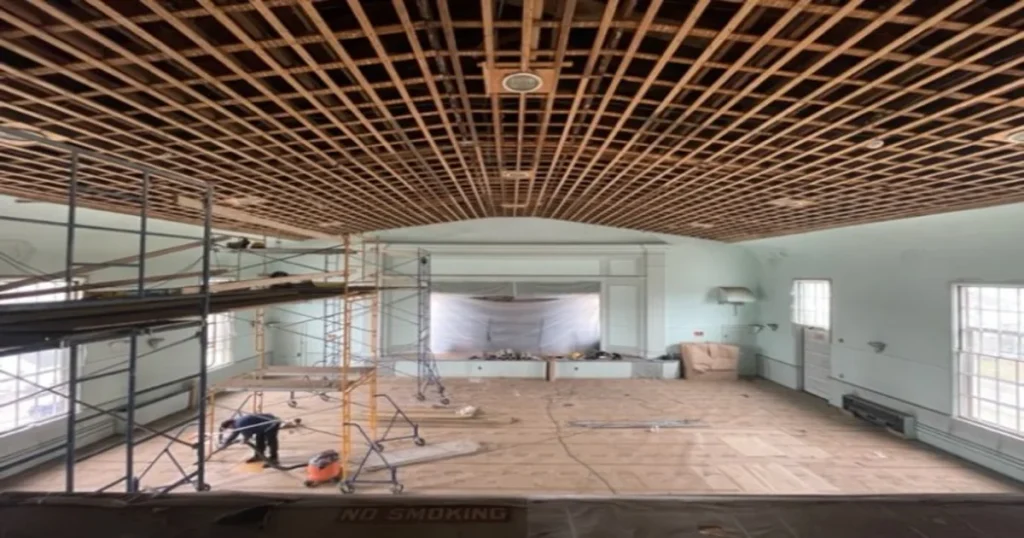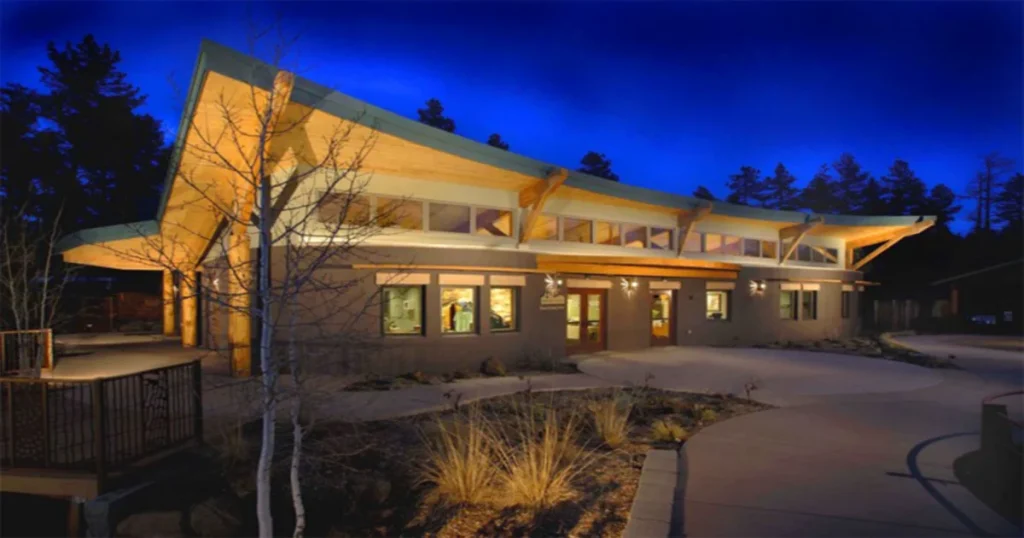Prescott, Arizona is not just another picturesque town in the Southwest; it’s a locale where architecture and climate enter into an intricate dance. The climate significantly impacts how homes, public buildings, and even outdoor spaces are designed.

Understanding the influence of Prescott’s climate on local architecture offers insights into sustainable living, local history, and future trends. In this article, we will dive deep into the aspects that make Prescott’s architecture a fascinating case study in climate adaptability.
The Climate of Prescott: A Primer
Prescott enjoys a mild climate, but it’s still Arizona—expect temperature variations and a few unique weather features. On average, the city experiences daytime temperatures ranging from 50°F in the winter to 89°F in the summer.
Despite the fair climate, Prescott is prone to certain challenges like summer monsoons and occasional snowfall. Therefore, architectural planning needs to account for these weather extremes, ensuring the built environment can withstand the elements.
Historical Overview: Architecture in Prescott
Before diving into the nitty-gritty of how climate influences local architecture, it’s crucial to understand Prescott’s architectural history. Native Americans were the first to construct dwellings in the area, making use of natural materials like adobe and stone.
European settlers later arrived, adding their architectural flavors like wood-framed houses and brick buildings. As Prescott moved into the modern era, construction technology allowed for even more diversity, incorporating steel, glass, and energy-efficient materials. This historical layering of architectural styles, driven partly by climate, makes Prescott a rich study in environmental adaptation.
Climate-Adaptive Materials: Building Sustainably
Traditionally, materials like adobe and stone were primarily used in Prescott due to their excellent thermal mass properties. These materials can absorb heat during the day and release it at night, making them energy-efficient choices for local homes.
However, technological advancements have introduced modern alternatives. For example, sustainable insulations and reflective coatings have become popular. EPA guidelines suggest that the right kind of materials can substantially reduce energy consumption and lower your carbon footprint.
The use of any material usually involves a cost-benefit analysis. Factors like initial costs, long-term savings, and environmental impact all play crucial roles in this decision-making process.
Heat Regulation: Strategies to Beat the Sun
In a place like Prescott, regulating heat is a priority. Passive solar design is a traditional and still relevant method that makes use of natural light to heat buildings. Well-placed windows and thermal floors can trap heat, reducing the need for artificial heating systems.
Strategic shading through architectural features and trees can also lower indoor temperatures. According to Energy.gov, a well-designed shading system can reduce your energy bills substantially.
Yet another method employed is evaporative cooling. While this might sound high-tech, it’s a technique that’s been used for centuries. By allowing water to evaporate within the building structure, you can naturally cool down interior spaces.
Cold Resistance: Adapting to the Chilly Nights

While daytime temperatures can soar, the nights in Prescott can get quite chilly. Here, thermal mass plays a significant role. Materials like adobe can absorb heat during the day and release it slowly as temperatures drop. The Sustainable Design Institute emphasizes the importance of thermal mass in energy-efficient homes.
Active heating solutions like radiant floor heating have also found their way into modern Prescott homes. Such systems are not just efficient but are also a comfortable way to warm your feet during colder months.
Emergency preparations, such as backup generators and high-grade insulation, can also provide the necessary resiliency against unexpected cold snaps or power outages.
Water Management: Harnessing Precipitation
Prescott doesn’t face the same water scarcity issues as other Arizonian cities, but it’s still smart to think about water management. Rainwater harvesting systems are a popular choice, collecting precipitation for non-potable uses like watering plants and flushing toilets.
Drought-resistant landscaping is another excellent way to manage water. Native plants require less water and maintenance, reducing the overall water demand. Websites like Water Use It Wisely offer valuable tips on designing water-efficient landscapes.
When it comes to architecture, drainage and flooding solutions are essential, especially in areas prone to monsoons. Specialized roof designs and advanced gutter systems can channel water away from the structure, minimizing flood risks.
Wind is an often-overlooked aspect of architectural design, but not in Prescott. Architects use features like windbreaks and buffer zones to mitigate the impact of strong winds.
Aerodynamic design principles can also influence how buildings are structured. Rounded corners, for instance, can minimize wind resistance, making the structure more stable.
Materials play a role here too. Wind-resistant materials like reinforced concrete can withstand wind forces, adding to the building’s overall integrity. The National Institute of Building Sciences provides guidelines on how to make buildings wind-resistant, offering another layer of safety and efficiency.
The Importance of Orientation
The orientation of a building can make a world of difference when it comes to climate adaptation. By maximizing sunlight exposure, for instance, you can reduce the need for artificial lighting.
Airflow patterns should also be considered. Properly oriented buildings can capture prevailing winds, making natural ventilation a breeze (pun intended!). ArchDaily often features articles that highlight the importance of building orientation for both aesthetic and functional purposes.
The Role of Outdoor Spaces
Outdoor spaces in Prescott, such as patios and decks, are not just for looks; they are designed to be functional all year round. Insulated patio roofs and retractable awnings can help control temperature and sunlight exposure.
Outdoor living spaces are more than just extensions of the home; they are separate ecosystems that need to be planned meticulously. For example, stone pathways can be designed to capture rainwater, and drought-resistant plants can add both beauty and functionality.
Community Layouts: More Than Just Individual Homes
While individual homes can be fascinating, community layouts in Prescott are where architectural planning shines. Neighborhoods are designed with the climate in mind, with features like communal green spaces that offer both aesthetic and cooling benefits.

The layout of streets and infrastructure also takes the climate into account. Roads are designed to facilitate efficient water drainage, and public spaces are planned to offer maximum shade and wind protection.
Environmental Impact: Sustainable Architecture
Green building certifications like LEED are gaining traction in Prescott, encouraging architects and homeowners alike to consider the environmental impact of their choices. The U.S. Green Building Council offers resources on how to make your home more sustainable.
Community initiatives, such as urban gardens and communal solar power setups, add another layer of sustainability to Prescott’s architecture. These projects not only foster community spirit but also contribute to the area’s resilience and self-sufficiency.
Local Architectural Styles and Inspirations
Prescott’s architecture draws from various styles and inspirations. Pueblo Revival, characterized by stucco walls and flat roofs, is a nod to Native American heritage.
Ranch-style homes, with their open layouts and large windows, offer a modern, airy feel. Recently, more avant-garde and futuristic architectural designs have also started making their way into the cityscape, incorporating materials like metal and glass.
These architectural choices aren’t just aesthetic decisions; they’re deeply influenced by Prescott’s unique climate. For instance, the flat roofs of Pueblo Revival homes are excellent for rainwater harvesting, while the large windows of Ranch Style homes maximize natural light and heat.
The Economic Aspects of Climate-Adaptive Architecture
Investing in climate-adaptive architecture doesn’t just benefit the environment; it also has economic perks. For one, homes built with energy-efficient features generally have higher property values.
Government incentives can further sweeten the deal. Programs such as federal tax credits for installing solar panels or upgrading to energy-efficient appliances can make sustainability economically appealing. Energy Star is a useful resource for understanding what kind of incentives are available.
In the long run, these climate-adaptive features translate into lower utility bills, offering homeowners considerable long-term savings.
Social and Cultural Impact
Architecture is more than bricks and mortar; it’s a reflection of the community’s values and traditions. By incorporating elements from Prescott’s rich architectural history, new constructions serve as a bridge between past and present.
Accessibility is another factor. Making climate-adaptive and sustainable architecture accessible to all socioeconomic groups can create a more inclusive community. Organizations like Habitat for Humanity have been pivotal in making this happen.
Future Trends: Where Are We Headed?
Climate change is not just a buzzword; it’s a real factor that architects in Prescott are preparing for. As weather patterns become more unpredictable, new building materials and techniques are continually being developed.
Technology also plays a role. Smart home systems, for example, can automatically adjust heating or cooling depending on the weather, reducing energy consumption. Innovations in material science, such as phase-changing materials that can store and release thermal energy, promise to revolutionize climate-adaptive architecture even further.
Case Studies: Real-World Examples
Prescott is home to some architectural marvels that serve as excellent case studies. Notable buildings like the Yavapai County Courthouse and certain community projects demonstrate the power of thoughtful, climate-adaptive design.
These buildings are not just beautiful; they are functional, sustainable, and deeply rooted in the local climate and culture. They serve as living proof of what can be achieved when architects and planners consider the unique challenges and opportunities that Prescott’s climate presents.
Resources for Homeowners and Architects
If you’re a homeowner or an architect looking to build in Prescott, several resources can guide you. Local architectural firms specialize in climate-adaptive designs that are both beautiful and functional.

Building permits and regulations are also something to keep in mind. The City of Prescott’s official website often updates its section on building codes and regulations, making it a valuable resource for anyone looking to build or renovate.
Frequently Asked Questions:
In this section, we will be delving into some of the most common inquiries and curiosities that surround our topic.
What types of materials are commonly used in Prescott’s architecture?
In Prescott, you’ll find a variety of materials, both traditional and modern. Adobe and stone are commonly used for their thermal mass properties, but you’ll also find wood-framed houses and modern constructions that use steel, glass, and energy-efficient materials like reflective coatings.
How does Prescott’s climate differ from other parts of Arizona?
Prescott experiences a more moderate climate compared to other parts of Arizona. While daytime temperatures can be warm, they are generally not as extreme as in places like Phoenix. Additionally, Prescott gets more precipitation, including occasional snowfall in the winter, which makes its climate quite distinct.
Are there any tax incentives for building sustainably in Prescott?
Yes, federal and sometimes state incentives are available for implementing energy-efficient features in your home. Tax credits for installing solar panels or upgrading to energy-efficient appliances can be accessed. Websites like Energy Star offer a comprehensive list of available incentives.
What are some examples of climate-adaptive architectural features commonly found in Prescott?
Some of the key climate-adaptive features in Prescott include passive solar design, well-placed windows for thermal mass, and strategic shading to lower indoor temperatures. Rainwater harvesting systems are also popular, and you’ll find many homes with windbreaks and aerodynamic design principles to withstand the local winds.
Summary: Impact of Prescott’s climate on local architecture
In Prescott, the climate is not an obstacle but an opportunity to innovate and adapt. The city’s unique weather patterns have profoundly influenced its architectural landscape, creating a built environment that is not just beautiful but also functional and sustainable.
From the choice of materials to the orientation of buildings, every aspect is finely tuned to the local climate. As we look toward the future, ongoing advancements in technology and material science promise to take Prescott’s climate-adaptive architecture to new heights.
Let’s embrace these challenges as opportunities for innovation, sustainability, and community-building.



Leave a Comment
You must be logged in to post a comment.